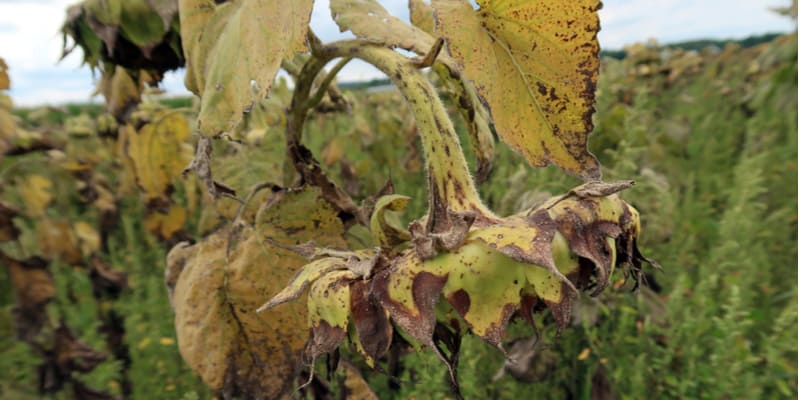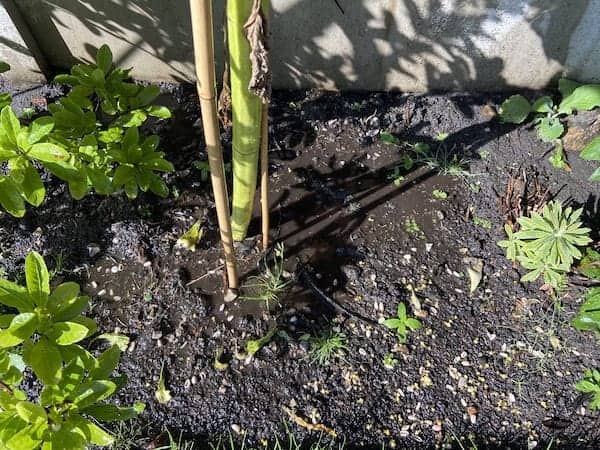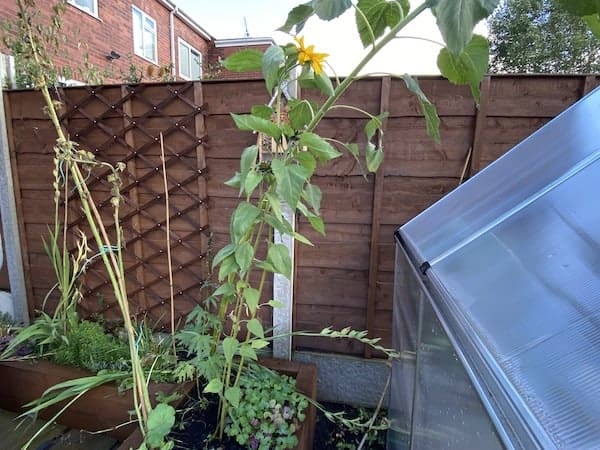
5 Reasons Why Your Sunflowers May Be Drooping and Wilting
Our site is reader supported, this means we may earn a small commission from Amazon and other affiliates when you buy through links on our site.
Sunflowers match their name due to their vibrant petals that are pleasing to the eye. When growing sunflowers, you have to monitor them often so that you can catch any issues before they escalate.
However, what if your sunflowers have been doing well but you notice they are drooping? While there may be cause for concern, there is usually a reason for this and it can often be resolved in most cases.
Below are some reasons that may be causing your sunflowers to start to wilt and get drooping heads
Not watering them enough is a common reason for drooping sunflowers
As much as sunflowers love sunshine, it can get too hot and they do take up a significant amount of water, especially the larger varieties. Longer periods of drought will cause the plants to droop and even during mild weather they often still need watering regularly.
I recommend checking the soil is moist by analysing the top layer of the soil. For sunflowers grown in pots, these will need watering more often, check the compost in pots by pushing your finger into the soil up to a considerable depth to check moisture levels. If the soil is a little dry give them some water.
Sunflowers need support to hold the heavy heads to prevent them from drooping
Sunflowers can grow up to four meters tall and this means that the taller they are, the more their balance is compromised. If you are sure that your plants are healthy and it is not time to harvest seeds, maybe they just need a little support as they become more top-heavy as they mature.
Provide structural support by attaching them using twine to stakes or thick bamboo canes. Find a stake or bamboo stick of a sizeable length so that the plants are supported if they continue growing.
Make sure to leave a little wiggle room when attaching sunflowers to supporting structures to avoid damaging the stem during strong winds.
Also, as the plant continues to grow (and sunflowers grow quickly) keep attaching the stem to the twine every 8-12 inches depending on the severity of drooping to help keep them upright.
Read next: How to grow sunflowers from seed
The heads will naturally droop when the sunflowers are ready to harvest
The reason why your sunflowers are drooping is that they are fully matured and are ready for harvesting seeds. There is no way of avoiding this because the weight of the seeds is pulling down the structure and causing the heads to droop or nod downwards.
You can check if the seeds are ready for harvesting once the back of the head starts yellowing and turning brown and the petals fade.
Those growing sunflowers for the flower arrangements cut them before they start forming seeds, right before they bloom. That way, the head will not be too heavy.
Read my guide here on how to harvest sunflowers seeds here
Sunflower transfer shock
One can say that sunflowers do not appreciate a sudden change of environment. Their root systems are delicate therefore rushed transplants can be detrimental. Take care not to bend or snap the taproot because it could lead to wilting. Make use of biodegradable growing pots made from biodegradable materials to avoid disturbing the roots.
Before transplanting seedlings, give them time to harden and develop stronger roots. If the roots are stronger, they can survive the movement without significant damage. Be sure to sow seedlings in sizeable containers to avoid root-bound issues. Transfer the seedlings as soon as they are well established to give the roots enough room to establish.
Read next: What are my sunflowers not flowering?
Are diseases or pests causing my sunflowers to wilt?
Diseases
Sunflowers are not prone to many diseases but there are a few diseases to look out for. One of the more serious diseases is phoma black stem that causes the head to droop. Brought about by fungi such as Phoma macdonaldii, the infection infiltrates the system discolouring the stem and causing wilting.
Such fungal infections are brought about by overwatering sunflowers or growing them in poor draining soil that easily become waterlogged. There is no known chemical control for phoma black stem or phomopsis stem canker, thus what remains is to uproot and discard the plants. Do not include these infected plants in your compost, as the disease will spread around.
In addition, avoid using the area where the infected plants were planted until a significant amount of time has passed. As a preventative measure, seek disease-resistant varieties to avoid fungal diseases.
Pests and cause sunflowers to wilt by damaging the foliage
Pests such as spider mites, aphids and caterpillars enjoy feasting on sunflowers. Luckily, pest damage does not go unchecked for long because damaged leaves and stems are typically the first indicators and you notice early enough to treat them.
There are both chemical and organic interventions you can use to rid of unwanted pests. Firstly, identify the culprit then deal with them to restore the plant’s vigour and prevent drooping. I recommend spraying pests with a garden pesticide at the first sign.
Why are My Sunflowers Leaves Curling?
Final recommendion
Planting your sunflowers in the best growing conditions will help avoid most unnecessary issues. If you take preventative measures to keep pests/diseases a bay and keep the sunflowers structurally supported with plenty of water but not too much, sunflowers should be low maintenance and grow well. Just remember to plant them in full sun and well-drained soil.


